Plates 3.4-3.5: Chancel and Stalls in Three Kentish Churches (Original Explanatory Account)
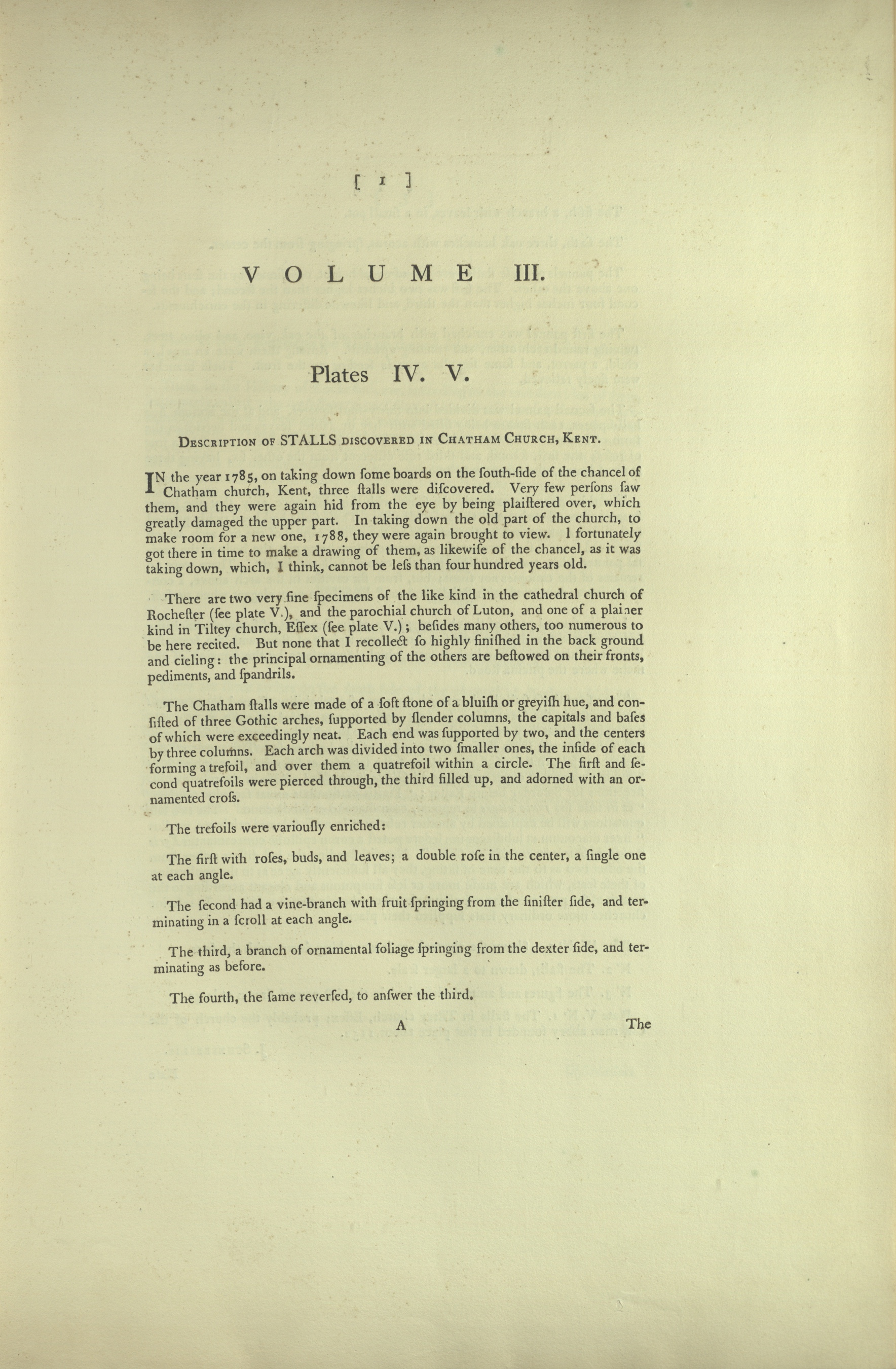
Translations by Richard Goddard
[(Page) 1]
VOLUME III. Plates IV. V.
DESCRIPTION OF STALLS DISCOVERED IN CHATHAM CHURCH, KENT.
IN the year 1785, on taking down some boards on the south-side of the chancel of Chatham church, Kent, three stalls were discovered. Very few persons saw them, and they were again hid from the eye by being plaistered over, which greatly damaged the upper part. In taking down the old part of the church, to make room for the new one, 1788, they were again brought to view. I fortunately got there in time to make a drawing of them, as likewise of the chancel, as it was taking down, which, I think, cannot be less than four hundred years old.
Read more/less...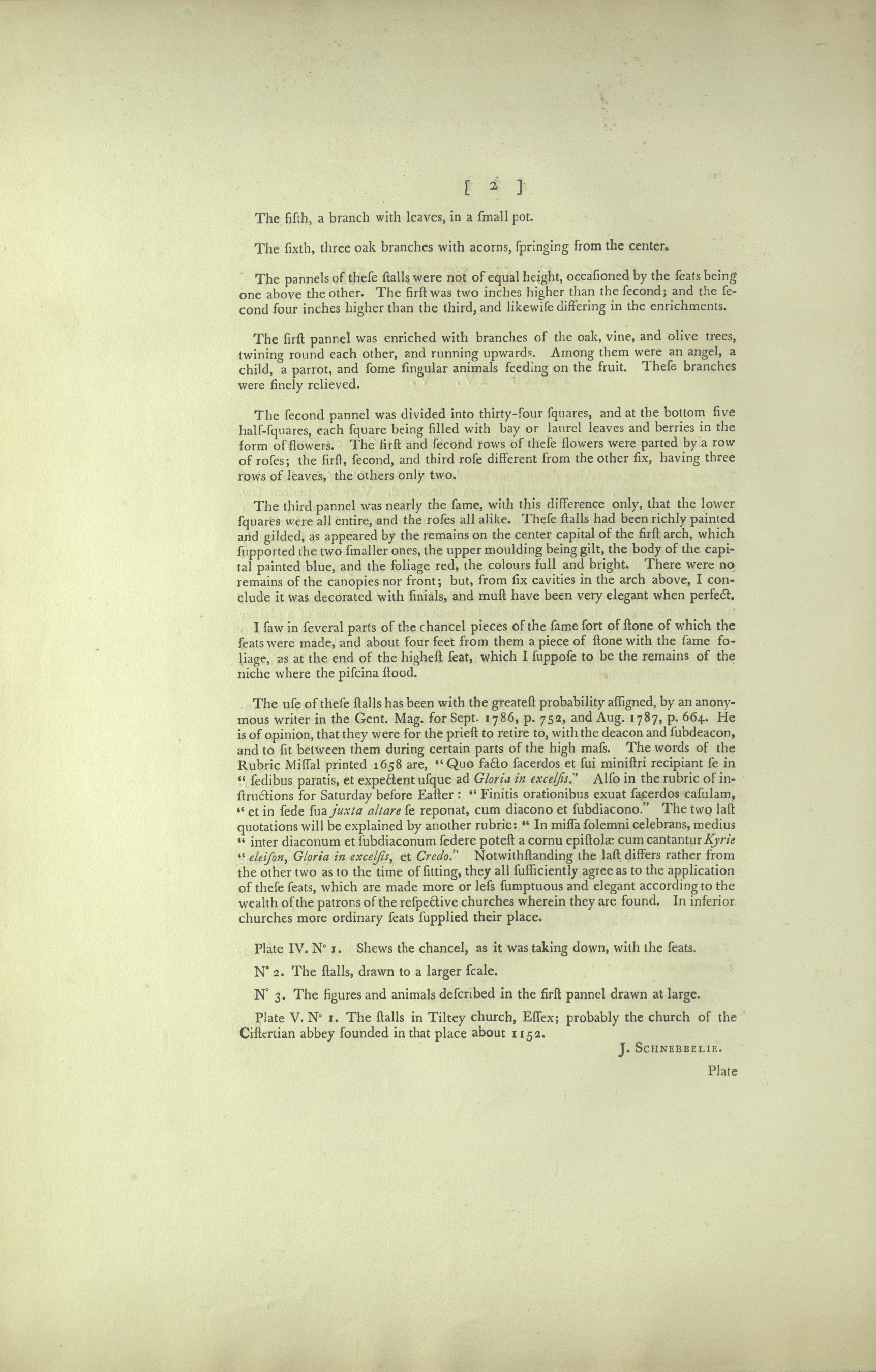
[(Page) 2]
The fifth, a branch with leaves, in a small pot.
The sixth, three oak branches with acorns, springing from the center.
The pannels of these stalls were not of equal height, occasioned by the seats being one above the other. The first was two inches higher than the second; and the second four inches higher than the third, and likewise differing in the enrichments.
The first pannel was enriched with branches of the oak, vine, and olive trees, twining round each other, and running upwards. Among them were an angel, a child, a parrot, and some singular animals feeding on the fruit. These branches were finely relieved.
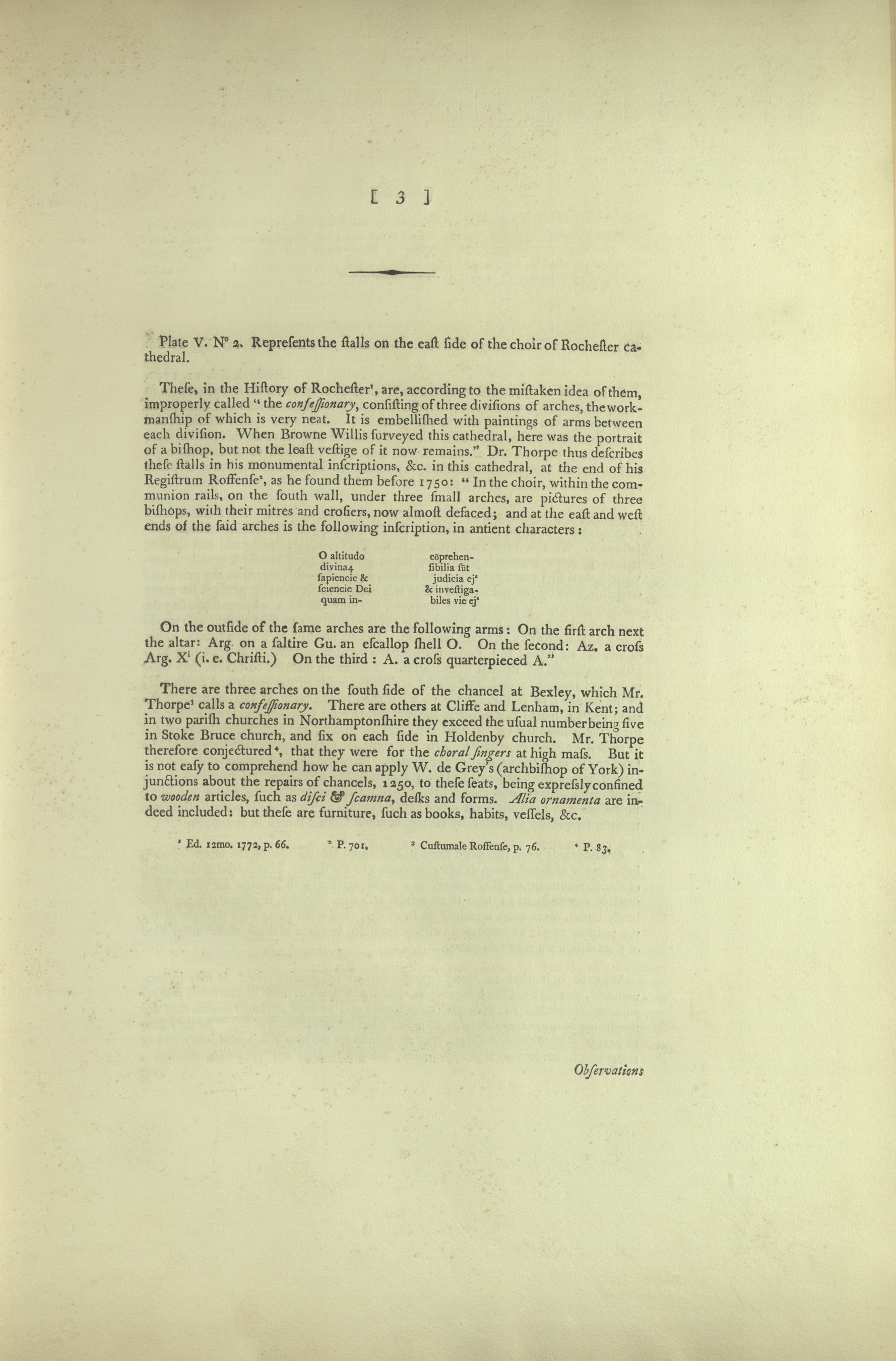
[(Page) 3]
Plate V. No 2. Represents the stalls on the east side of the choir of Rochester cathedral.
These, in the History of Rochester1, are, according to the mistaken idea of them, improperly called “the confessionary, consisting of three divisions of arches, the workmanship of which is very neat. It is embellished with paintings of arms between each division. When Browne Willis surveyed this cathedral, here was the portrait of a bishop, but not the least vestige of it now remains.” Dr. Thorpe thus describes these stalls in his monumental inscriptions, &c. in this cathedral, at the end of his Registrum Roffense2, as he found them before 1750: “In the choir, within the communion rails, on the south wall, under three small arches, are pictures of three bishops, with their mitres and crosiers, now almost defaced; and at the east and west ends of the said arches is the following inscription, in antient characters:

[(Page) 4]
Observations on Stone Seats in Churches. In a Letter from DAVID WELLS, Esq. F.A.S.
Burbach, Feb. 11, 1790.
CERTAIN ill-grounded conjectures having already made their appearance in print, and gained some degree of credit, respecting the appropriation of those particular Stone Seats in many of our old churches, which are so justly admired, and remain at this day the cause of much speculation; I beg leave at this present time to offer my observations on this subject, not only in direct contradiction to the vulgar notions thereof, but likewise to lay before this Society such reasons as may lead to an absolute decision of this particular.
Read more/less...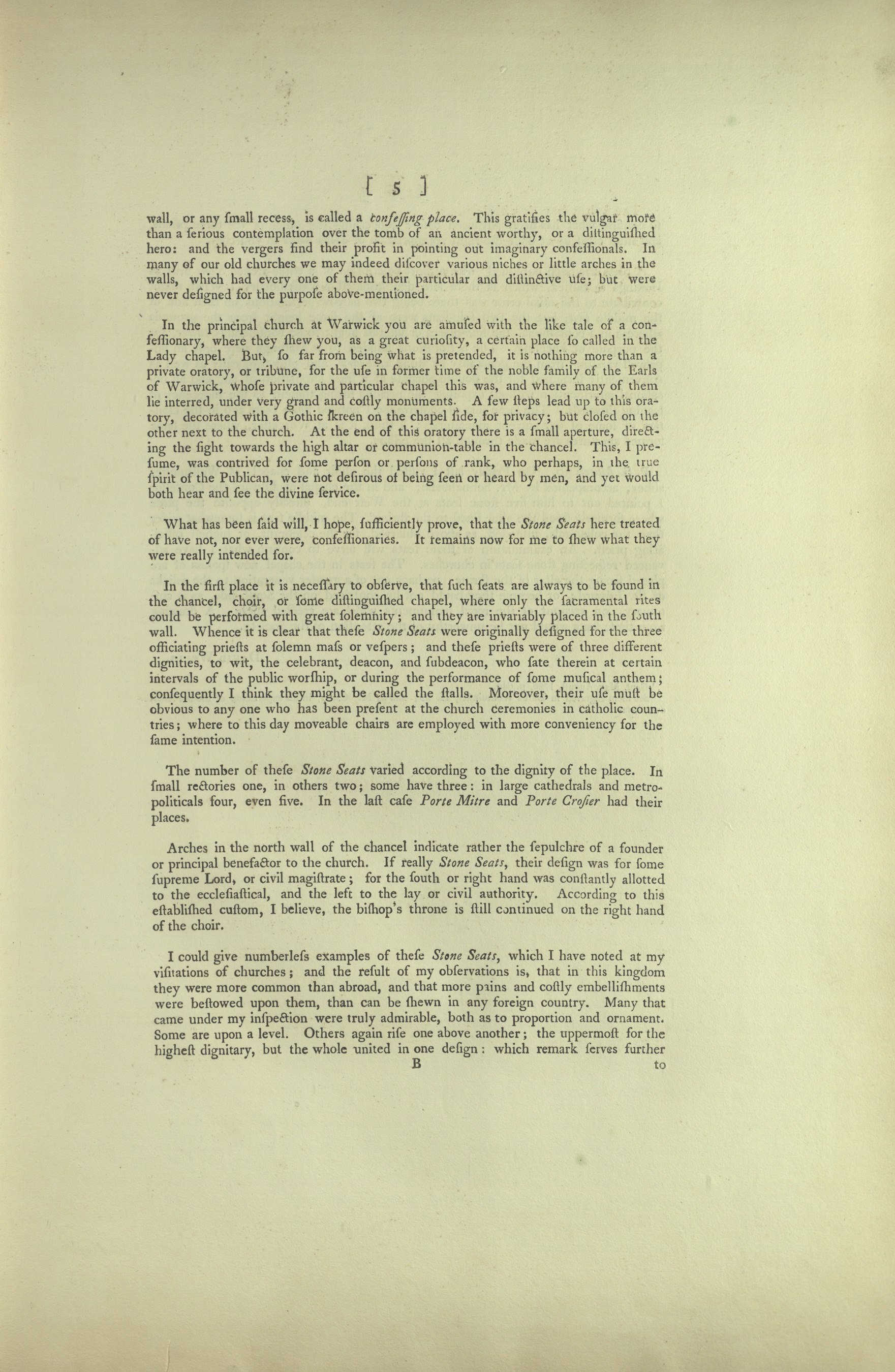
[(Page) 5]
wall, or any small recess, is called a confessing place. This gratifies the vulgar more than a serious contemplation over the tomb of an ancient worthy, or a distinguished hero: and the vergers find their profit in pointing out imaginary confessionals. In many of our old churches we may indeed discover various niches or little arches in the walls, which had every one of them their particular and distinctive use; but were never designed for the purpose above-mentioned.
Read more/less...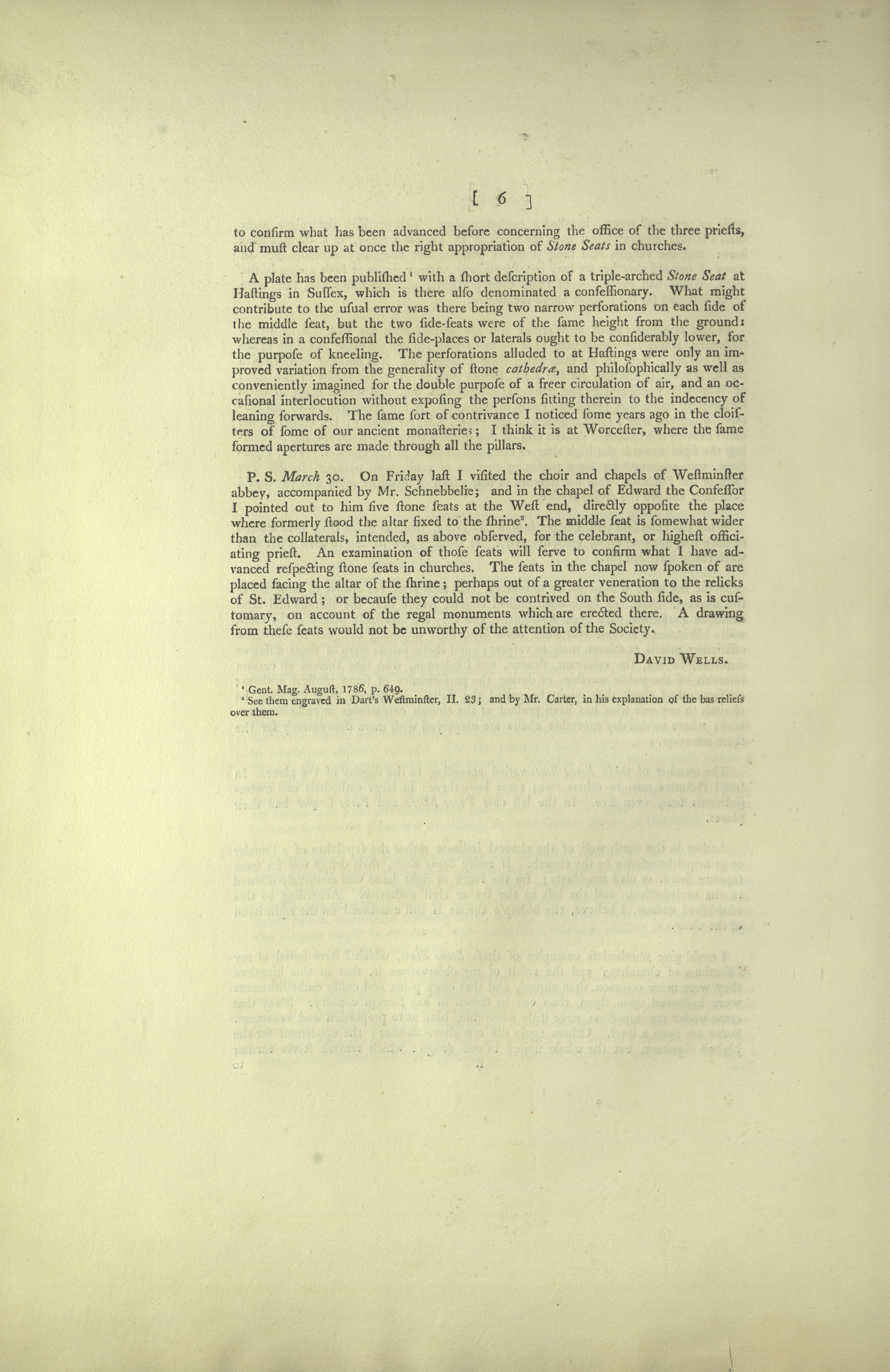
[(Page) 6]
to confirm what has been advanced before concerning the office of the three priests, and must clear up at once the right appropriation of Stone Seats in churches.
A plate has been published1 with a short description of triple-arched Stone Seat at Hastings in Sussex, which is there also denominated a confessionary. What might contribute to the usual error was there being two narrow perforations on each side of the middle seat, but the two side-seats were of the same height from the ground: whereas in a confessional the side-places or laterals ought to be considerably lower, for the purpose of kneeling.
Translation of the longer Latin passage:
Page 2, lines 34-36: During the celebration of High Mass, he may sit between the deacon and the sub-deacon on the south side of the Church [literally, “on the side where the Epistle is read”], while the Kyrie, the Gloria, and the Credo are being sung.
